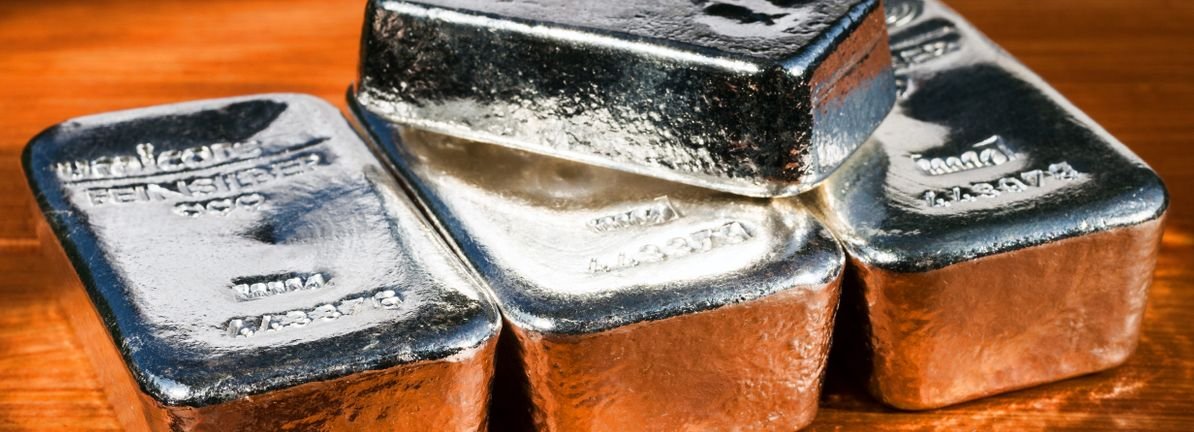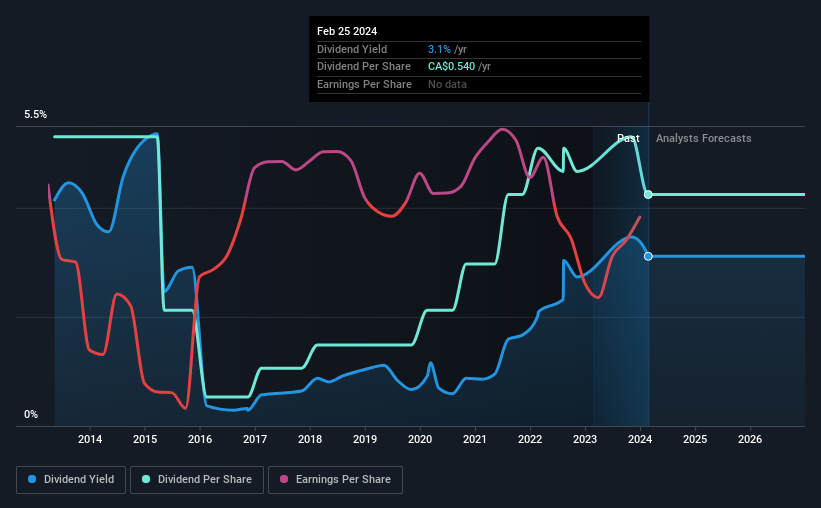Some investors rely on dividends for growing their wealth, and if you’re one of those dividend sleuths, you might be intrigued to know that Pan American Silver Corp. (TSE:PAAS) is about to go ex-dividend in just 4 days. The ex-dividend date is usually set to be one business day before the record date which is the cut-off date on which you must be present on the company’s books as a shareholder in order to receive the dividend. The ex-dividend date is an important date to be aware of as any purchase of the stock made on or after this date might mean a late settlement that doesn’t show on the record date. Meaning, you will need to purchase Pan American Silver’s shares before the 1st of March to receive the dividend, which will be paid on the 15th of March.
The company’s next dividend payment will be US$0.10 per share, on the back of last year when the company paid a total of US$0.40 to shareholders. Calculating the last year’s worth of payments shows that Pan American Silver has a trailing yield of 3.1% on the current share price of CA$17.36. We love seeing companies pay a dividend, but it’s also important to be sure that laying the golden eggs isn’t going to kill our golden goose! As a result, readers should always check whether Pan American Silver has been able to grow its dividends, or if the dividend might be cut.
View our latest analysis for Pan American Silver
Dividends are typically paid from company earnings. If a company pays more in dividends than it earned in profit, then the dividend could be unsustainable. Pan American Silver reported a loss after tax last year, which means it’s paying a dividend despite being unprofitable. While this might be a one-off event, this is unlikely to be sustainable in the long term. Considering the lack of profitability, we also need to check if the company generated enough cash flow to cover the dividend payment. If cash earnings don’t cover the dividend, the company would have to pay dividends out of cash in the bank, or by borrowing money, neither of which is long-term sustainable. Pan American Silver paid out more free cash flow than it generated – 183%, to be precise – last year, which we think is concerningly high. It’s hard to consistently pay out more cash than you generate without either borrowing or using company cash, so we’d wonder how the company justifies this payout level.
Click here to see the company’s payout ratio, plus analyst estimates of its future dividends.
Have Earnings And Dividends Been Growing?
Companies with falling earnings are riskier for dividend shareholders. If earnings decline and the company is forced to cut its dividend, investors could watch the value of their investment go up in smoke. Pan American Silver was unprofitable last year and, unfortunately, the general trend suggests its earnings have been in decline over the last five years, making us wonder if the dividend is sustainable at all.
The main way most investors will assess a company’s dividend prospects is by checking the historical rate of dividend growth. Pan American Silver’s dividend payments per share have declined at 2.2% per year on average over the past 10 years, which is uninspiring. It’s never nice to see earnings and dividends falling, but at least management has cut the dividend rather than potentially risk the company’s health in an attempt to maintain it.
Get our latest analysis on Pan American Silver’s balance sheet health here.
To Sum It Up
From a dividend perspective, should investors buy or avoid Pan American Silver? We’re a bit uncomfortable with it paying a dividend while being loss-making, especially given that the dividend was not well covered by free cash flow. Bottom line: Pan American Silver has some unfortunate characteristics that we think could lead to sub-optimal outcomes for dividend investors.
So if you’re still interested in Pan American Silver despite it’s poor dividend qualities, you should be well informed on some of the risks facing this stock. To help with this, we’ve discovered 2 warning signs for Pan American Silver that you should be aware of before investing in their shares.
Generally, we wouldn’t recommend just buying the first dividend stock you see. Here’s a curated list of interesting stocks that are strong dividend payers.
Have feedback on this article? Concerned about the content? Get in touch with us directly. Alternatively, email editorial-team (at) simplywallst.com.
This article by Simply Wall St is general in nature. We provide commentary based on historical data and analyst forecasts only using an unbiased methodology and our articles are not intended to be financial advice. It does not constitute a recommendation to buy or sell any stock, and does not take account of your objectives, or your financial situation. We aim to bring you long-term focused analysis driven by fundamental data. Note that our analysis may not factor in the latest price-sensitive company announcements or qualitative material. Simply Wall St has no position in any stocks mentioned.





